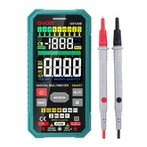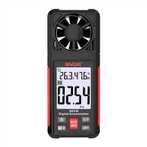Key Principles for Selecting a Multimeter
1. Function
In addition to the five functions of measuring AC and DC voltage, AC and DC current, resistance, etc., a digital multimeter also has functions such as digital calculation, self checking, reading retention, error reading, diode detection, word length selection, IEEE-488 interface or RS-232 interface. When using it, it should be selected according to specific requirements.
2. Range and measuring range
A digital multimeter has many ranges, but its basic range accuracy is high. Many digital multimeters have automatic range adjustment function, which eliminates the need for manual range adjustment, making measurement convenient and fast. There are also many digital multimeters that have over range capability. When the measured value exceeds the range but has not yet reached the maximum display, there is no need to change the range, thereby improving accuracy and resolution.
3. Accuracy
The maximum allowable error of a digital multimeter depends not only on its variable term error, but also on its fixed term error. When making a choice, it is also necessary to consider how much stable error and linear error are required, and whether the resolution meets the requirements. For general digital multimeters that require levels 0.0005 to 0.002, at least 61 digits should be displayed; Level 0.005 to 0.01, with at least 51 digits displayed; Level 0.02 to 0.05, with at least 41 digits displayed; Below level 0.1, there should be at least 31 digits displayed.
4. Input resistance and zero current
The low input resistance and high zero current of a digital multimeter can cause measurement errors. The key is to determine the limit value allowed by the measuring device, that is, the internal resistance of the signal source. When the impedance of the signal source is high, instruments with high input impedance and low zero current should be selected so that their impact can be ignored.
5. Series mode rejection ratio and common mode rejection ratio
In the presence of various interferences such as electric fields, magnetic fields, and high-frequency noise, or when conducting long-distance measurements, interference signals are easily mixed in, causing inaccurate readings. Therefore, instruments with high serial and common mode rejection ratios should be selected according to the usage environment. Especially for high-precision measurements, a digital multimeter with a protective terminal G should be selected to effectively suppress common mode interference.
6. Display format and power supply
The display format of a digital multimeter is not limited to numbers, but can also display charts, text, and symbols for on-site observation, operation, and management. According to the external dimensions of its display devices, it can be divided into four categories: small, medium, large, and super large.
The power supply of a digital multimeter is generally 220V, while some new types of digital multimeters have a wide power range, which can be between 1100V and 240V. Some small digital multimeters can be used with batteries, while others can be in three forms: AC power, internal nickel cadmium batteries, or external batteries.






